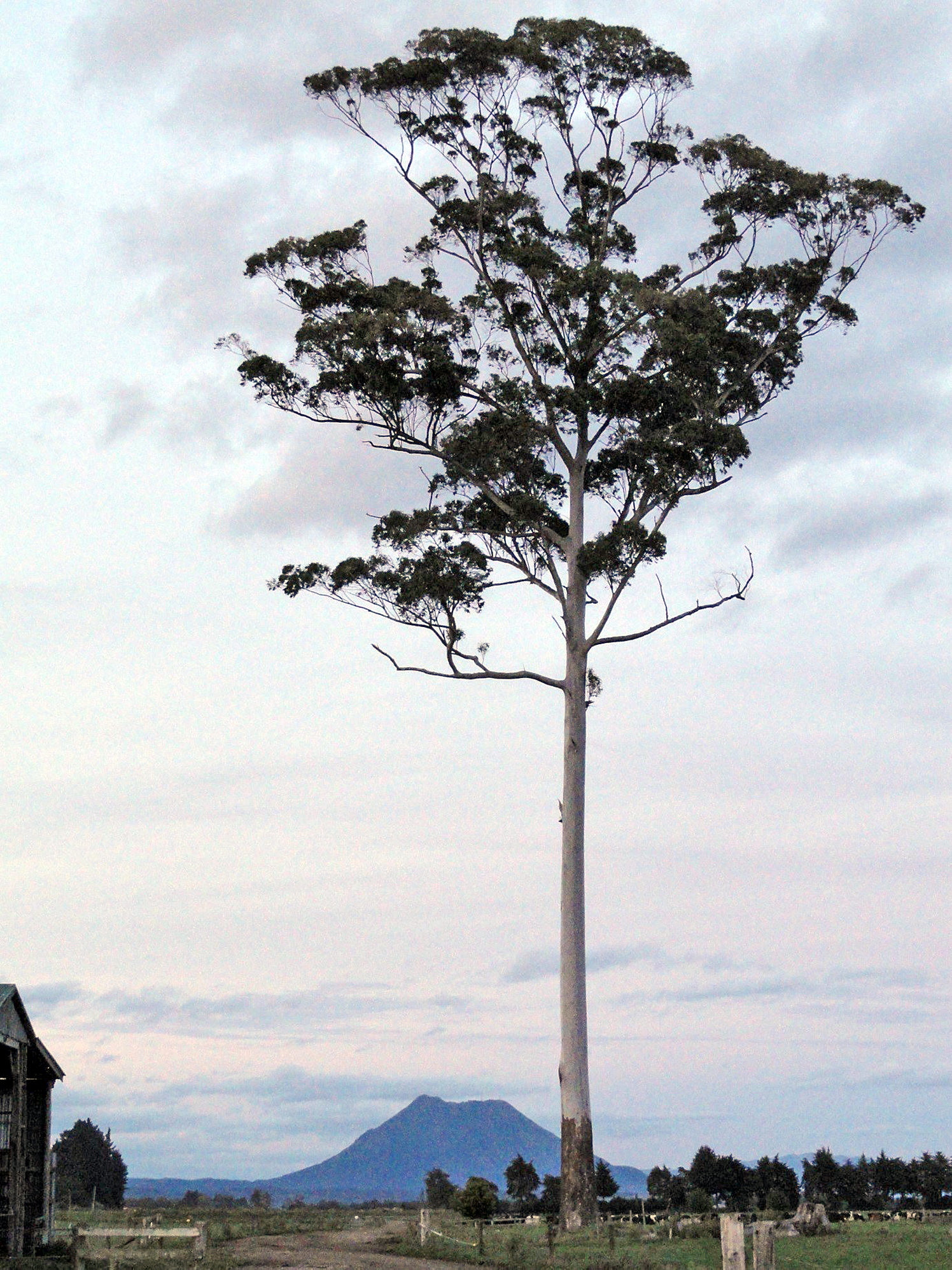Africa – a remaining giant of the Rangitaiki Plains

Contributed
Standing tall and solitary, "Africa" is a remarkable survivor among what was once a vast population of gum trees planted across the Rangitaiki Plains more than a century ago.
These trees, known for their remarkable ability to transpire water, played a crucial role in transforming the wetlands of the Rangitaiki into productive agricultural land.
As part of a government initiative during the drainage and development of the plains, pioneering farmers were provided with seedlings of various gum species to assist in this enduring task.
Africa stands at the heart of the Barr family farm, which has been in the family since 1908.
The farm is now owned by Matthew and Genna Barr, with Matthew being the fourth generation to work this land.
Africa was planted in around 1920 by Matthew's great-grandfather, Alan B Barr, a man who returned from the First World War with a deep appreciation for trees and a vision to bring life to the bare landscape he encountered.
The name "Africa" was given by Emma Barr, Matthew's sister, who thought it a fittingly monumental name for such a monumental tree.
Today, this proud tree also holds a deep familial significance, as it now guards the ashes of both Jim Barr (Matthew's grandfather) and Alan J Barr (Matthew's father).
The practice of planting gum trees along drains was common among the early settlers of the plains.
However, these locations often led to the trees developing unbalanced root systems, anchoring them on only one side.
When the Wahine storm struck in 1968, thousands of these gum trees, shallow-rooted and precariously perched along drains, toppled over.
The fallen trees became invaluable as fence posts, firewood, and building timber.
Jim Barr, Matthew's grandfather, along with his friend, Jack Goodrick, established a simple sawmill to process the timber from the fallen trees on the farm and in the surrounding areas.
When Alan Barr returned to the farm in the mid-1980s, he continued the arduous task of clearing the storm's aftermath across the farm.
After the mill had been dismantled, Jim stored many sawn log “treasures” in the farm’s old barns.
Africa, along with a cluster of other gum trees, survived the Wahine storm thanks to the farm's relatively dry conditions and the strategic location of the tree.
In the 1980s, one of the remaining gum trees was felled by a lightning storm while the dairy herd grazed nearby, resulting in the unfortunate loss of a prized cow.
The timber from that fallen tree now forms part of the alterations to the original farm's homestead, where Matt and his family live.
Aware of the potential danger posed by the remaining trees, the decision was made to fell most of them and store the timber for a planned new house build.
Yet, Africa, the largest and most majestic of them all, was spared.
Today, Africa stands proud and tall at 57 metres with a girth just under 5m.
Her straight trunk rises to 17m before giving way to a billowing crown at 23m.
She holds the distinction of being the tallest recorded tree of her species on the New Zealand Tree Register.
Africa is not just a significant feature of the Barr farm; she is a dominant landmark on the landscape of the Rangitaiki Plains, embodying the resilience and history of the land she has stood over for more than a century -
Viv Barr is the wife of the late Alan Barr and mother of Matthew Barr, the farm owner